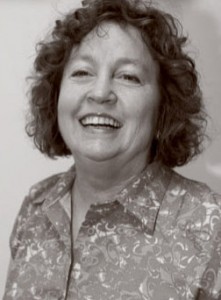Category Archives: Lifestyles
Don’t let allergies keep you indoors

Pharmacist Todd Morris of The Corner Drug in Pickens says many people who come into the pharmacy during springtime need allergy medication, although they ask for cough and cold medicine. Emily Wright/Courier
By Olivia Fowler
Courier Staff
If you suffer from allergies every spring, you are not alone. More and more people seem to have the same problem.
Pharmacist Todd Morris of The Corner Drug in Pickens says pollen is likely the culprit.
“During the last three to four years, pollen counts have been astronomical,” Morris said. “We have had people coming in with allergies who have never been bothered with it before.”
Incredible insects
By Scott Stegenga
For the Courier
Early spring is a major transition time in nature. As the days lengthen and warm up, new life begins to emerge and stir everywhere.
One of the most notable changes is the increase in insect activity. Insects exist by the trillions. If we had a dollar for every insect in our country, our national debt would be wiped out with money to spare!
When one door closes…
Life As I Know It
By Nicole Daughhetee
During the January SDPC Board meeting, when the issue of removing student-led prayer prior to the meetings was first approached publically, hundreds of people turned out in a show of support for maintaining the current policy.
Apparently there were so many people that I was upbraided by a concerned citizen for not properly “guesstimating” the number.
The February meeting drew another large crowd — still in the hundreds — of people who came to speak and support the district’s then-current student-led invocation policy. Standing-room-only is how I would describe the scene in the board room that night.
The adventures of Red Dog
On the Way
By Olivia Fowler
Red Dog lives a life full of adventure and challenges. He is constantly pulled between his view of his responsibilities on Fowler Farm and his wish to obey and please Fowler.
He sticks to Fowler like glue and follows him everywhere he goes, whether invited or not. When the first furrows are cut into the rich dirt on Fowler Farm, Red Dog walks behind the tractor, making sure the rows are straight and investigating any interesting things turned up with the dirt.
What does ‘Easter’ mean?

Easter is a Christian holiday that celebrates the central event of the Christian faith: the resurrection of Jesus Christ three days after his death by crucifixion. The resurrection of Jesus Christ is the centerpiece of the Christian faith. The Apostle Paul even goes so far to say that if Jesus Christ had not been resurrected then the Christian faith is worthless and futile.
Without Easter there is essentially no Christianity.
While it is a religious-based holiday, the name Easter is rooted, or has linguistic meaning rooted in non-Biblical history and events.
For example, the origins of the word “Easter” are not certain, but the name is most probably derived from Estre, an Anglo-Saxon goddess of spring. The German word Ostern has the same derivation, but most other languages follow the Greek term used by the early Christians: pascha, from the Hebrew pesach (Passover).
In Latin, Easter is Festa Paschalia (plural because it is a seven-day feast), which became the basis for the French Pâques, the Italian Pasqua, and the Spanish Pascua. Also related are the Scottish Pask, the Dutch Paschen, the Danish Paaske, and the Swedish Pask.
Sweet Easter treats

By Nicole DaughheteeCourier Staff
I have an incredible sweet tooth and must admit that confectionary delicacies are certainly a treat I enjoy during the Easter season. Without a doubt, my favorite Easter candy is the Cadbury Crème Egg.
John Cadbury made his first “French eating Chocolate” in 1842, but it was not until 1875 that the first Cadbury Easter Eggs were made. Progress in the chocolate Easter egg market was slow until a method was found for making the chocolate flow into the molds.
The modern chocolate Easter egg owes its progression to the two greatest developments in the history of chocolate — the Dutch invention of a press for separating cocoa butter from the cocoa bean in 1828 and the introduction of a pure cocoa by Cadbury Brothers in 1866. The Cadbury process made large quantities of cocoa butter available, and this was the secret of making molded chocolate or indeed, any fine eating chocolate.
Symbols of Easter
The Easter holiday and its celebrations around the world are rich with symbolism. Included below are just a sampling of Easter-related symbols and how they came to be.
The Easter Bunny
: The exact origins of this mythical mammal are unclear, but rabbits, known to be prolific procreators, are an ancient symbol of fertility and new life. According to some sources, the Easter bunny first arrived in America in the 1700s with German immigrants who settled in Pennsylvania and transported their tradition of an egg-laying hare called “Osterhase” or “Oschter Haws.” Their children made nests in which this creature could lay its colored eggs. Eventually, the custom spread across the U.S. and the fabled rabbit’s Easter morning deliveries expanded to include chocolate and other types of candy and gifts, while decorated baskets replaced nests. Additionally, children often left out carrots for the bunny in case he got hungry from all his hopping.
What is Easter?
Christianity’s most sacred and important holiday, Easter celebrates Jesus Christ’s crucifixion and resurrection from the dead. There are several Catholic, Lutheran and Anglican traditions prior to Easter Sunday that have interesting historical and Biblical significance and tie into Easter.
Ash Wednesday is the first day of Lent in the Western Christian calendar that occurs 46 days before Easter. According to the gospels of Matthew, Mark and Luke, Jesus spent 40 days fasting in the desert, where he endured temptation by Satan. Ash Wednesday marks the beginning of this 40-day liturgical period of prayer and fasting or abstinence and sacrifice.
Taking a stand

Local preachers continue fight
against SDPC policy
By Nicole Daughhetee
Courier Staff
As a Miami expat who moved ironically north into the Bible Belt of South Carolina, I freely confess and admit that I have, at times, had some narrow-minded views of the religious community in which I found myself living.
I grew up attending First Baptist Church of Miami Shores, part of the Southern Baptist convention for the decades I was a member there, but my experience in church there was vastly different from my experiences in Pickens County as I searched for a church I could call home.
Tips for romance
Life As I Know It
By Nicole Daughhetee
Bravo’s The Millionaire Matchmaker is primarily watched by women — if I had to guess — but should be watched by men. Patti Stanger can be crude at times, but she always tells it like it is. While she earns her bread and butter as a love guru for the wealthy elite, her advice is certainly translatable to the average Joe.


























